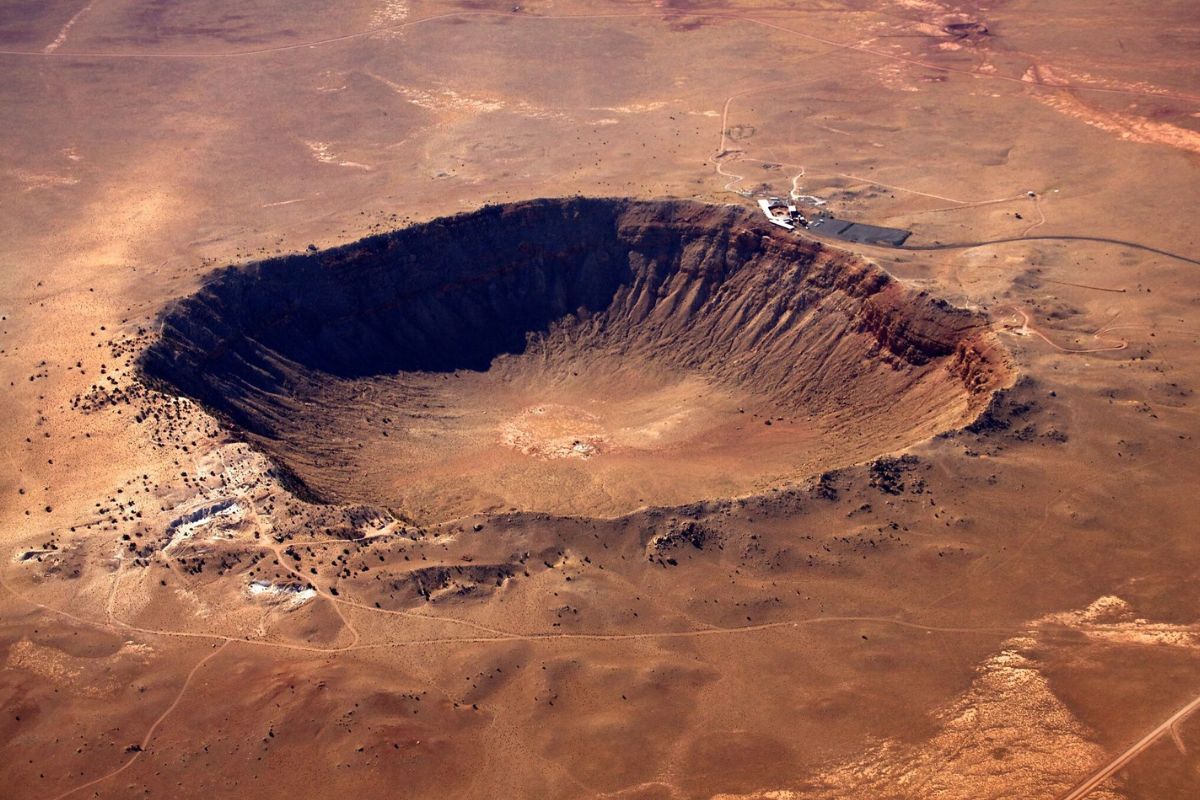Secret Asteroid Impact Craters Revealed

Have you ever wondered about the hidden scars our planet bears from ancient cosmic collisions? Asteroid impact craters are like Earth's secret tattoos, telling stories of dramatic events from millions of years ago. These craters, often concealed by natural processes, hold clues about the history of our planet and the solar system. Some are massive, spanning miles, while others are smaller but no less significant. Scientists use advanced technology to locate and study these hidden craters, revealing fascinating details about the past. Join us as we uncover the mysteries behind these impact craters and what they tell us about Earth's turbulent history.
Hidden Wonders Beneath Our Feet
Asteroids have been colliding with Earth for billions of years, leaving behind craters that tell stories of cosmic impacts. Some of these craters are hidden in plain sight, waiting to be discovered. Let's uncover some of these secret asteroid impact craters.
1. Chicxulub Crater, Mexico
Located on the Yucatán Peninsula, this massive crater is linked to the extinction of the dinosaurs. Measuring over 150 kilometers in diameter, it was formed by an asteroid impact around 66 million years ago. The crater is buried under layers of sediment, making it invisible to the naked eye.
2. Vredefort Crater, South Africa
The Vredefort Crater is the largest verified impact crater on Earth. With a diameter of about 300 kilometers, it was created by an asteroid impact over 2 billion years ago. The crater is so old that erosion has worn away much of its original structure, leaving behind only the central dome.
3. Sudbury Basin, Canada
Located in Ontario, the Sudbury Basin is one of the world's largest impact structures. Formed about 1.85 billion years ago, this crater is approximately 130 kilometers wide. The impact that created the Sudbury Basin also led to the formation of rich mineral deposits, making it a significant mining region.
4. Popigai Crater, Russia
Hidden in the Siberian tundra, the Popigai Crater is one of the largest impact craters on Earth. It spans about 100 kilometers in diameter and was formed by an asteroid impact around 35 million years ago. The impact turned the surrounding rock into diamonds, creating one of the world's largest diamond deposits.
5. Manicouagan Crater, Canada
This striking crater in Quebec is one of the oldest known impact structures, formed about 214 million years ago. The Manicouagan Crater is unique because it has a ring-shaped lake at its center, created by the rebound of the Earth's crust after the impact. The lake is a popular spot for fishing and boating.
6. Chicxulub Crater, Mexico
Located on the Yucatán Peninsula, this massive crater is linked to the extinction of the dinosaurs. Measuring over 150 kilometers in diameter, it was formed by an asteroid impact around 66 million years ago. The crater is buried under layers of sediment, making it invisible to the naked eye.
7. Chesapeake Bay Crater, USA
Discovered beneath the waters of Chesapeake Bay, this crater was formed by an asteroid impact about 35 million years ago. The Chesapeake Bay Crater is roughly 85 kilometers in diameter and is buried under hundreds of meters of sediment. Its discovery has provided valuable insights into the history of asteroid impacts on Earth.
8. Morokweng Crater, South Africa
Located in the Kalahari Desert, the Morokweng Crater is an ancient impact structure formed about 145 million years ago. The crater is buried under sand and sediment, making it difficult to detect. However, drilling has revealed fragments of the asteroid that created the crater, offering a glimpse into the past.
9. Kara Crater, Russia
Situated in the Arctic region of Russia, the Kara Crater is a large impact structure formed around 70 million years ago. The crater is partially submerged under the Kara Sea, making it challenging to study. Despite this, researchers have identified it as one of the significant impact craters on Earth.
10. Gosses Bluff Crater, Australia
Located in the Northern Territory, the Gosses Bluff Crater is a striking impact structure formed about 142 million years ago. The crater is about 24 kilometers in diameter and is surrounded by a ring of hills. It is a sacred site for the indigenous people of Australia and a popular tourist destination.
Hidden Craters and Their Stories
Asteroid impact craters hold secrets about our planet's history. These hidden scars tell tales of massive collisions that shaped Earth. By studying these craters, scientists learn about past events that influenced climate, life, and geology. Each crater offers clues about the size, speed, and composition of the impacting asteroid. This research helps predict future impacts and develop strategies to protect our planet.
Exploring these craters isn't just about science. It's about understanding our place in the universe. The more we learn, the better we can appreciate the forces that have shaped our world. Hidden craters remind us of Earth's dynamic nature and the ongoing changes it undergoes. They are windows into the past, helping us prepare for the future. Keep an eye on these discoveries; they might just change how we see our world.

